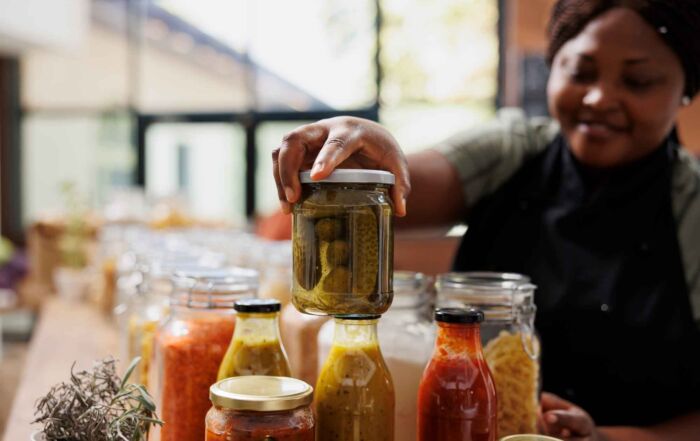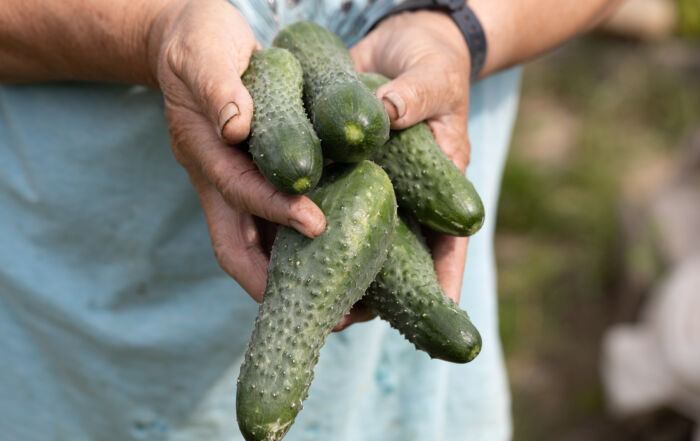September is Food Safety Education Month: The Culture of Food Safety
Developing a culture of food safety is important for any foodservice operation. You may be wondering–just what is a culture of food safety? Let’s start talking about it by first defining what is meant by culture. When you look culture up in the dictionary, you will see terms such as shared knowledge, beliefs, values, attitudes, and meanings; a way of life; patterns of behavior; learned behavior of a group of people; and transmitted from generation to generation. I think these descriptors provide good insight into the meaning of a culture of food safety. You can also think about where you grew up, and a vision of culture comes. For example, I grew up in rural Oklahoma, graduating in the 1970’s with a class of 24 students. My culture instilled in me an appreciation for rural life, hard work, and independence. As I grow older, I realize I haven’t changed very much from my early years, even though I have completed a PhD, lived a lot of places, and traveled throughout the world!
Think about your foodservice operation. Is food safety a shared value and do you see the appropriate behaviors being practiced all of the time? I have always liked one of the statements in Frank Yiannas’ book, “Food Safety Culture: Creating a Behavior-Based Food Safety System”. He says that food safety should be a value, not a priority. Your first reaction might be “of course food safety should be a priority!” Yiannas argues that priorities change, but values do not. For example, you could have a priority next year to redecorate the dining room in your operation and allocate the funds and time to complete the task. They key is complete the task. Priorities change from year to year, or when you accomplish those priorities. Food safety is ALWAYS on the list of things to do because it is a value. For your organization, you want it to be the way we do things here, part of your DNA!
We can also think of culture from a microbiological perspective. If you want to see if your operation is cleaned properly, you might take swabs and send them to the lab. In the lab, they “culture” them to see what microorganisms are present. This process requires an appropriate medium (with the correct nutrients), the proper temperature, and the appropriate length of time for the microorganisms to incubate. This is a very active process to make sure any microorganisms present are identified. The reason I give this example is that I want to stress that this is a purposeful and active process. Likewise, developing a culture of food safety is an active and purposeful process—and you are key to that process.
You may be a manager or a foodservice worker—no matter which one, you have an active role in the food safety culture in your operation. Keep in mind, there is already a culture of food safety—it may be a positive culture where food safety is valued and practiced, it may be a culture where food safety is practiced intermittently or when convenient (like when we are not too busy!), or it may be a culture where food safety is an afterthought. This month, take a hard look at your food safety culture. Observe how workers are practicing safe food handling practices. Are they routine or a sometime/never practice? Consider starting with hand washing because this is fundamental to safe food handling practices! Identify changes that you would like to see, and begin working on a plan. You may have a great culture of food safety—if so, congratulations! But likely, you will see changes that need to be made, because nothing is perfect and there is always a need for continuous improvement.
Here are some key elements that I think are critical for a strong culture of food safety:
Leadership Commitment. All leaders in the organization must be committed to food safety, they can’t just provide lip service. They must value food safety as equal to other factors such a profitability and food quality. Leaders must provide:
- Resources to implement food safety—time, equipment, etc.
- Orientation and training to bring all employees along
- Role modeling—Do as I do, not do as I say! For example, every time a supervisor or management employee walks into a kitchen, he or she should follow good handwashing procedures.
- Consistent messaging about the importance of food safety
Strong Human Element. People implement food safety, so everyone in the organization must be committed to food safety. It begins with hiring individuals who recognize the importance of good hygiene and personal practices. I think we can all agree some people just should not be working in foodservice! Once hired, be sure the new employee is informed about the culture – both in written guidance such as employee handbook and from observed actions of co-workers. Integrate food safety into everything in the organization—orientation, training, evaluation. Discuss food safety and identify impediments from the workers’ perspective.
Communication. Communication (written, verbal, and behavioral) should inform that everyone has responsibility for keeping food safe. Through orientation and training, the value of food safety is being communicated. There should be ongoing communication among workers and supervisors about expected food safety procedures, resources workers need to implement food safety, and way to improve processes.
Accountability. Everyone must be held accountable for following standard operating procedures. If someone doesn’t follow the SOP, supervisors AND co-workers should be empowered to correct the wrong behavior. Supervisors particularly cannot let failure of someone to do their job the way it is supposed to be done continue, as this can have toxic effect on other staff. Those in charge must take corrective actions when appropriate practices are not followed.
What is the food safety culture in your operation? What do you need to do to do to strengthen food safety? Start by renewing your focus on food safety–do a special food safety training, purchase a new piece of equipment to support food safety and let workers know why it was purchased, replace your old signage with some new fresh food safety messages, or involve workers in a special contest related to food safety. Let your imagination go wild! This is a time to take food safety to a new level and shine a spotlight on those who do follow safe practices. Risk nothing!
READ MORE POSTS
Why Canning in Foodservice Really Isn’t a Good Way to Preserve Fresh Produce
Canning has long been a trusted method for preserving fresh produce, offering a way to extend [...]
Managing Food Safety During the Foodservice Holiday Rush
The holiday season is a time of increased activity and demand in foodservice operations, from catering [...]
Ongoing Outbreaks: What We Can Learn from the Most Recent Carrot and Cucumber Outbreaks
Last month in our blog, we highlighted the recent E. Coli outbreak stemming from onions served [...]
The Hidden Dangers: Allergens in Your Foodservice Operation
It has been a while since we have addressed or discussed allergens in the blogs. In [...]











